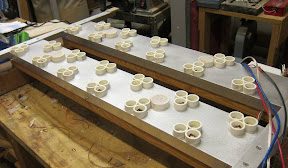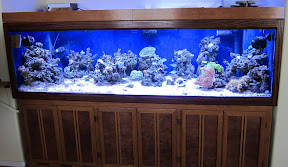magnetar68 said:I also went DIY and I am very happy with my build. There are some really nice kits now too. The hardest part for me was driving the dimming from my RKE controller.
How'd you end up driving it? Did you use PWM? I'm not too familiar with all of the capabilities of the RKE. It does look like a great controller but hopefully I can use my Raspberry Pi to build something comparable.
It's great to hear that quite a few people are using those same kits. I would probably have something fabricated from TAP Plastics to cover those drivers/dimmers. We did the same thing for Brandie's tank for the circuit I built to run four 140mm fans within her canopy to cool off her two 250W MH's.FeliciaLynn said:Thanks! Mine are open behind the tank and I've been considering covering them because right now I'm just super careful about not splashing them and so far so good. A lot of people on Nano-Reef have the kits from Aquastyleonline and they just buy some sort of plastic or metal box to put the drivers and dimmers into. They then connect knobs on the outside of the box to control them while keeping them protected from water. I probably need to get around to doing that with mine.denzil said:That looks pretty good, Felicia! Are those dimmable drivers left open behind the tank? I fear for when water may splash on those open terminal connections. =/
I feel pretty convinced that DIY may be the route I'll be taking. I think I'll do something a little bit different as far as the placement of the dimmable drivers. I do like the fact that you used the Wiremold to hide the cabling.
And honestly, I think DIY is the way to go with the LEDS because I saved at least 50% (probably much more) by going that route and it really wasn't that time consuming or difficult. I'm glad you like the Wiremold. I hate dangling wires and they were ruining the clean look of the hanging fixture before I hid them
Yeah, I was basing my price comparison to the brand name LED lights. For the same price as those cheap Chinese ones, I definitely think a DIY kit would be better. That RapidLED light measures 6" x 9". Not sure if that'll provide enough coverage?sfsuphysics said:Well you're not going to save over $100 off that cheap Chinese one (that very well might be good), but going the DIY route definitely will save you over $100 vs. brand name fixtures. Here's one I noticed a while back.denzil said:Yeah, I can totally build one from scratch or a kit. I learned circuits through school (Computer Engineering major; basically a hybrid of Computer Science and Electrical Engineering). It's really just a matter of opportunity cost and preference. I'm really only interested in the DIY route if I can save over $100. Otherwise, my time might be better spent doing personal development towards my career and hanging out with Brandie.
http://www.rapidled.com/8-x-solderless-triple-puck-kit-with-dimmable-drivers/
Hmmm triple pucks, 8 of them... that's an Aqua Illumination Sol clone! Best of all you don't even need to solder as it has the solderless connects! So easy even a caveman can do it!


